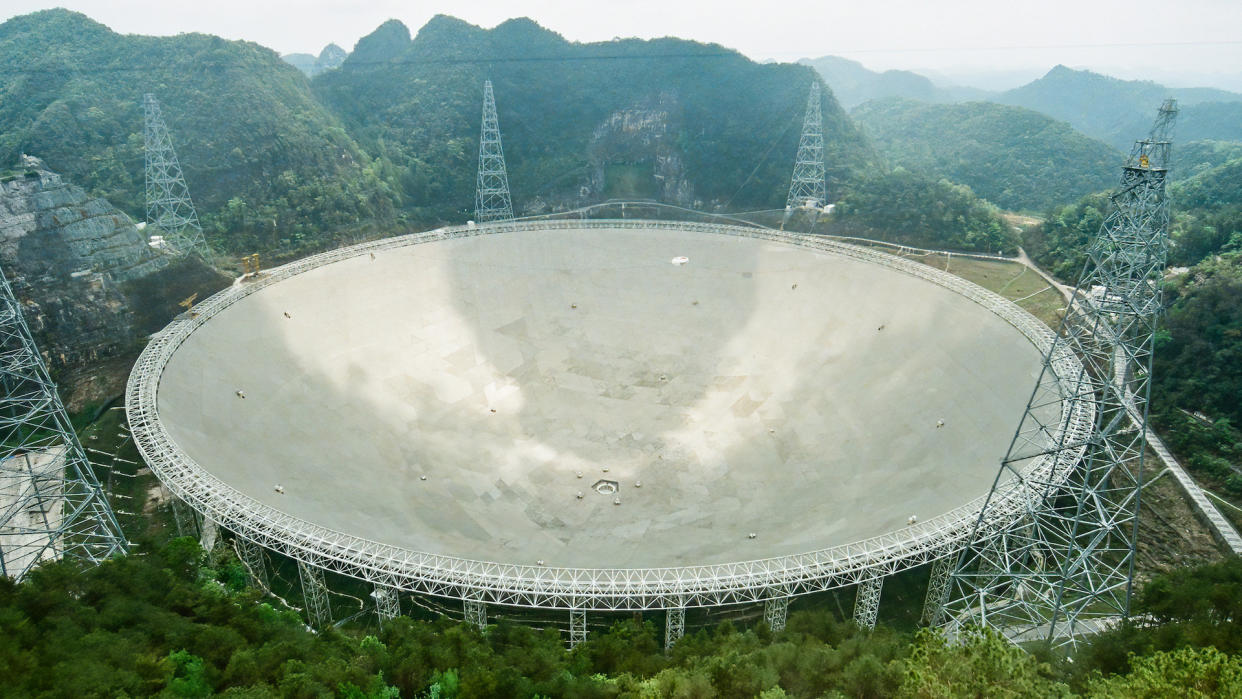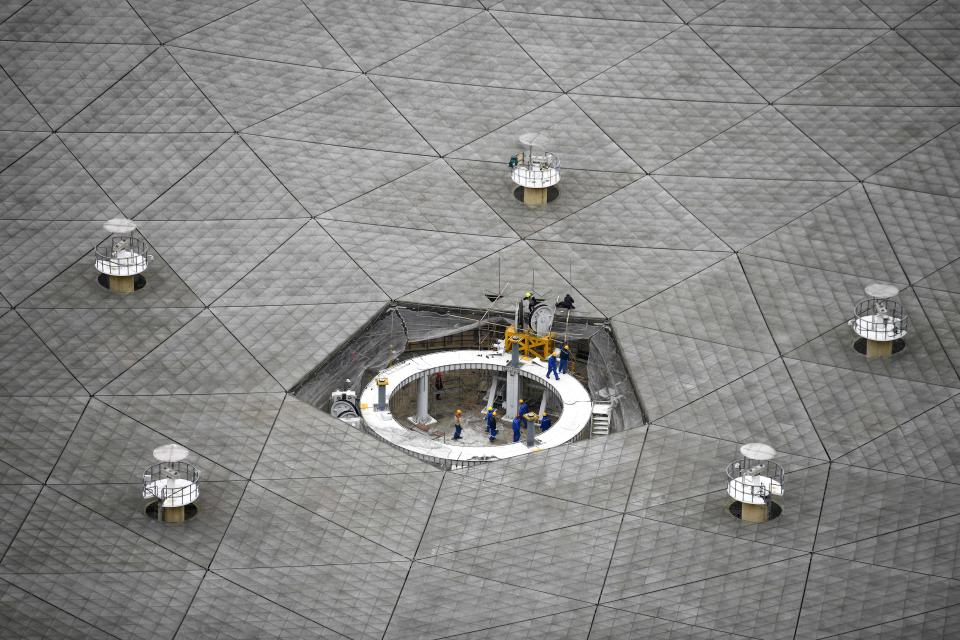World's largest radio telescope gets help from smart maintenance robots

Chinese authorities announced recently that a handful of "smart" robots have been inspected and approved for use in the upkeep of China's Five-hundred-meter Aperture Spherical Radio Telescope (FAST) — currently the largest single-dish radio telescope in the world. The new robots are ready for deployment, the officials said.
The primary role of these robots will be assessing the cables and pulleys that support FAST's feed cabin (the suspended structure that collects radio data collected by the dish); automating the maintenance of laser targets and actuators on the reflector; facilitating the assembly and disassembly of feed receivers; monitoring radio interference; and carrying out all-weather measurements of the 30-ton feed cabin.
With the feed cabin tethered 460 feet (140 meters) above the dish structure underneath, it is naturally a challenge to maintain, and with the dish's 0.3-mile (0.5 kilometers) diameter, maintaining the cables holding up the feed cabin is just as arduous.
Related: China is opening the world's largest radio telescope up to international scientists
According to interviews with the robots' engineers by China's state-run Xinhua news agency, one of the most important jobs of the new robots will be the replacement of special sensors in the dish that help relay radio signals to the feed cabin overhead. These are embedded in the aluminum reflectors that make up the dish, and which can be damaged by human maintenance workers crawling over them to get to the parts that need replacing.
Having the lighter-weight robots do this work greatly mitigates this problem. "Just the weight of the human [can] damage the reflector," an engineer on the robot design team said, "so the current solution is to use balloons [tethered to the back of a maintenance worker] to reduce the pressure on the reflector. But we all know…that it is very dangerous and inefficient."

Maintaining these and other components of the telescope means there are long stretches during which data isn’t being collected, and demand for the telescope has been high ever since China opened up FAST to international researchers in 2020.
Jiang Peng, FAST's head engineer, said that introducing these smart robots would enhance the operational safety of the telescope and extend its observational time, thereby boosting its efficiency. This in turn is expected to encourage the production of more scientific data.
RELATED STORIES:
— China wants to launch a moon-orbiting telescope array as soon as 2026
— China finishes building world's largest radio telescope
— Did China just detect signals from an alien civilization?
"We anticipate that these intelligent robots will extend the telescope's annual observation period by approximately 30 days," Jiang said, according to Xinhua.
Located in the southwestern province of Guizhou in a naturally occurring karst doline (a topographical depression caused by the dissolution of carbonic rock below the surface), FAST has a reception area equivalent to 30 football fields and has identified hundreds of new pulsars since it went into operation in 2016.
The dish’s importance as a scientific tool can’t be overstated. Not only is it the largest single dish radio telescope on Earth, but with the loss of the Arecibo Observatory in Puerto Rico in December 2020, FAST is even more important for astronomers. So anything that can extend its observational time is definitely welcome.

